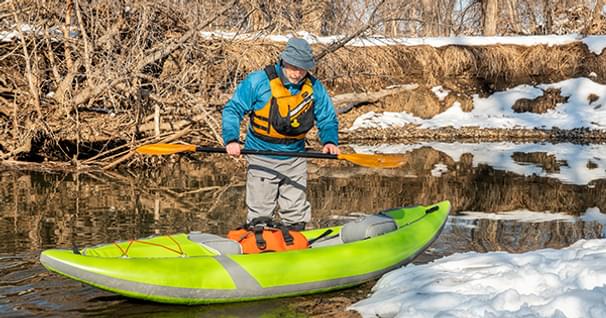How to Trim a Canoe
"How's My Trim Look?" Asking another canoeist this question can get some blank stares from novice paddlers. But veteran canoe trippers are well aware of the terminology, as well as the importance of checking one another out.
The best way to define trim is to view how much of the boat is in contact with the water, end to end, and which end has more depth under the surface. Trim can be altered by repositioning packs in the boat, and the paddlers as well. Doing so makes a major difference in the performance of the boat.
I find that most of the time you'll want to be slightly bow light, meaning your stern is deeper under the surface then the bow. This can make a huge difference during windy conditions or running rapids. The front glides through the water nicer and steering becomes much easier. Being nose heavy, especially while solo, can be a real challenge. It creates more resistance while propelling through the water. But more importantly, having the bow heavier can force you into a unplanned turn to one side or the other. Just the slightest amount of water piled up on one side of the bow will waver you totally offline.
To trim your boat, make sure you only make slight changes. Big changes may seem more effective at first, but can cause major problems with control and stability. By simply moving packs or switching who's in the bow and stern, you can easily make your canoe more seaworthy.
Solo paddlers don't necessarily want to be too bow light. By being slightly off you can help turn the boat quicker by just leaning side to side. You'll want to make sure to be more central in the canoe. If you sit in the stern seat and paddling into the wind, the canoe will definitely be too bow light and end up spinning around uncontrollably. That's why I like a prospector design canoe. They're symmetrical in shape, meaning both ends are the same shape. If you sit in the bow seat and paddle the canoe with the stern going forward, you'll have a much better time keeping the boat trimmed.
So what if you're on your own and have no one to check your trim. Here's an idea. Take a tennis ball, or even a golf ball, and place it in the bottom of the canoe. Which way it rolls determines your trim.
Kevin Callan is the author of 15 books including "The New Trailside Cookbook" and "The Happy Camper." A regular keynote speaker at major North American canoeing and camping expos for over 20 years, he has received three National Magazine Awards and four film awards, including top award at the prestigious Waterwalker Film Festival. Callan lives in Peterborough, Ontario, birthplace of the modern-day canoe.
Related Articles
Flexibility is always a good topic of discussion when it comes to kayaking. Depending on our style of…
Let's take a look at one of the strokes in the bracing family at the entry level. We have done High…
The best places to launch or land a canoe are beaches or other shallow shorelines. This will allow you…
When getting off your board, the first thing you'll want to do is take your paddle, reach down to the…



